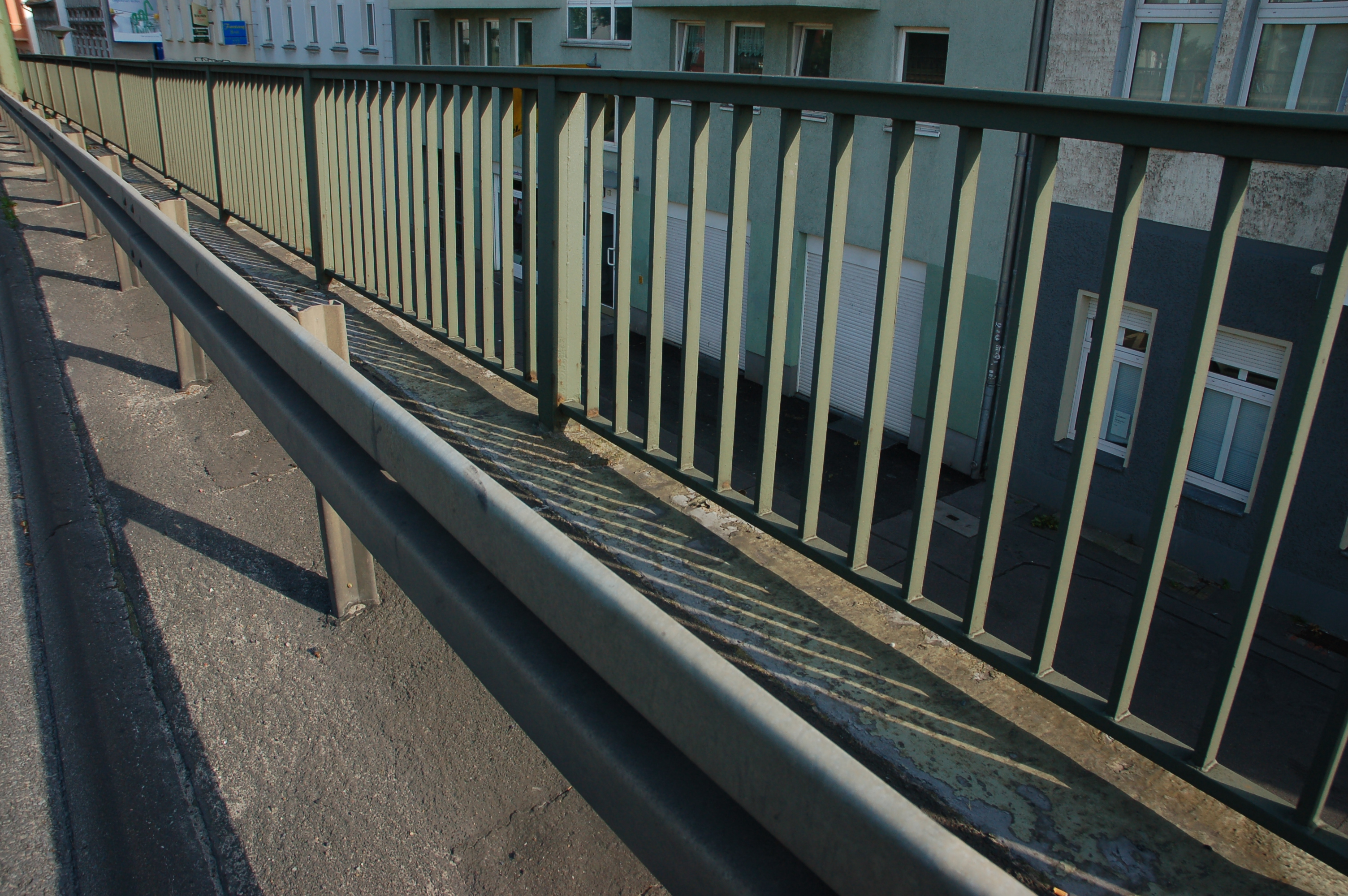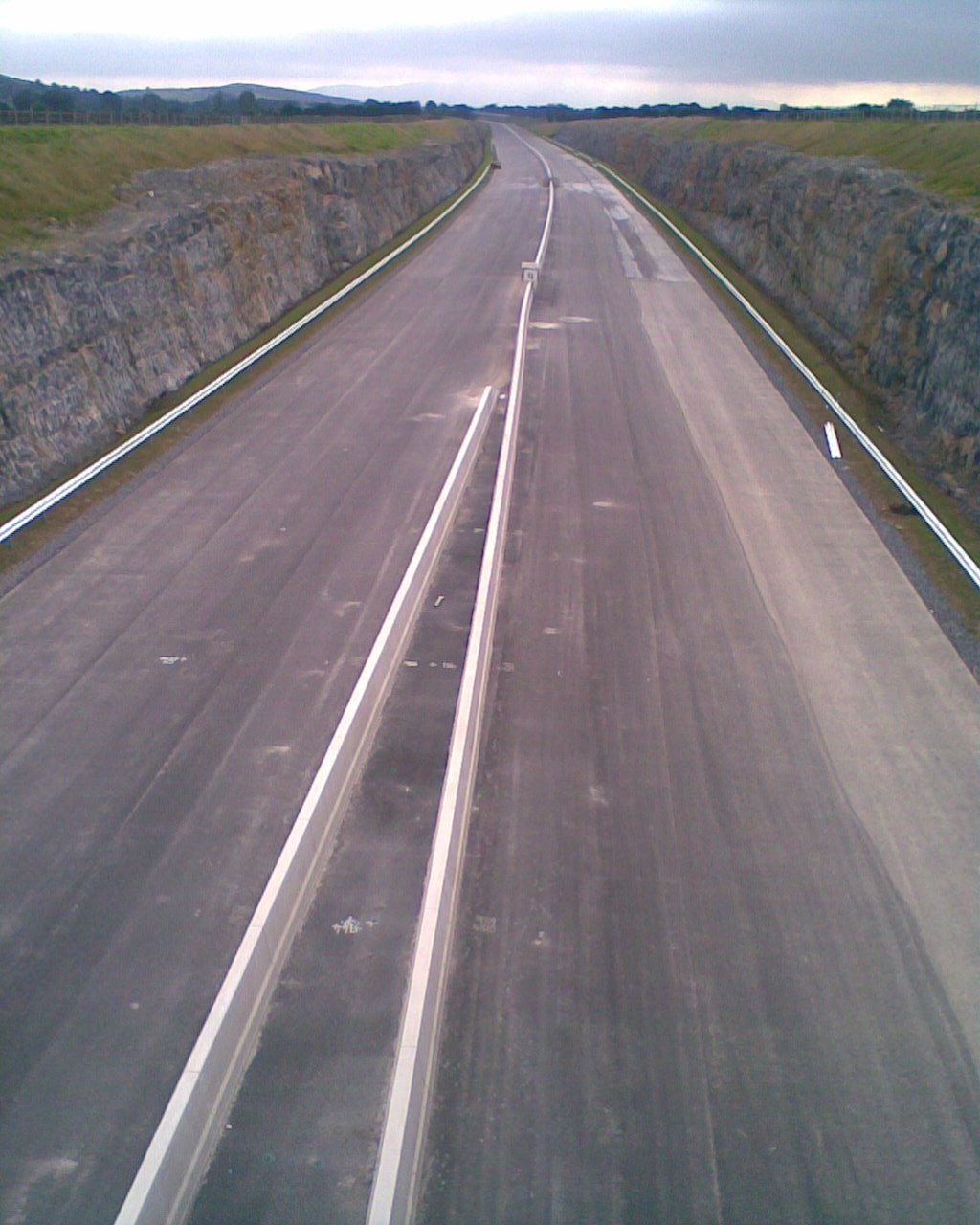|
Alaska Barrier
A Bremer wall, or T-wall, is a portable, steel-reinforced concrete blast wall of the type used for blast protection throughout Iraq and Afghanistan. The Bremer barrier resembles the smaller Jersey barrier, which has been used widely for vehicle traffic control on coalition military bases in Iraq and Afghanistan. To indicate that the Bremer barrier is similar but larger, the , intermediate-sized Bremer barriers are usually referred to as Texas barriers, but not to be confused with the Texas constant-slope barrier. Similarly, the largest barriers, which stand around , are called Alaska barriers. Unlike the Jersey barrier, which has sloped sides at the base, some Texas and Alaska barriers have a rectangular ledge base, usable as a bench for sitting or resting and approximately knee-high for a typical adult. Etymology These T-shaped walls were originally developed by the Israelis in the Israeli West Bank barrier. The term "T-wall" has been used commonly, due to the wall's cross- ... [...More Info...] [...Related Items...] OR: [Wikipedia] [Google] [Baidu] |
Bremer Barrier
A Bremer wall, or T-wall, is a portable, steel-reinforced concrete blast wall of the type used for blast protection throughout Iraq and Afghanistan. The Bremer barrier resembles the smaller Jersey barrier, which has been used widely for vehicle traffic control on coalition military bases in Iraq and Afghanistan. To indicate that the Bremer barrier is similar but larger, the , intermediate-sized Bremer barriers are usually referred to as Texas barriers, but not to be confused with the Texas constant-slope barrier. Similarly, the largest barriers, which stand around , are called Alaska barriers. Unlike the Jersey barrier, which has sloped sides at the base, some Texas and Alaska barriers have a rectangular ledge base, usable as a bench for sitting or resting and approximately knee-high for a typical adult. Etymology These T-shaped walls were originally developed by the Israelis in the Israeli West Bank barrier. The term "T-wall" has been used commonly, due to the wall's cross- ... [...More Info...] [...Related Items...] OR: [Wikipedia] [Google] [Baidu] |
Traffic Barrier
Traffic barriers (sometimes called Armco barriers,AK Steel (formerly Armco) genericized trademark also known in North America as guardrails or guard rails and in Britain as crash barriers) keep vehicles within their roadway and prevent them from colliding with dangerous obstacles such as boulders, sign supports, trees, bridge abutments, buildings, walls, and large storm drains, or from traversing steep (non-recoverable) slopes or entering deep water. They are also installed within medians of divided highways to prevent errant vehicles from entering the opposing carriageway of traffic and help to reduce head-on collisions. Some of these barriers, designed to be struck from either side, are called median barriers. Traffic barriers can also be used to protect vulnerable areas like school yards, pedestrian zones, and fuel tanks from errant vehicles. While barriers are normally designed to minimize injury to vehicle occupants, injuries do occur in collisions with traffic barriers. They ... [...More Info...] [...Related Items...] OR: [Wikipedia] [Google] [Baidu] |
Concrete Step Barrier
A concrete step barrier is a safety barrier used on the central reservation of motorways and dual carriageways as an alternative to the standard steel crash barrier. United Kingdom With effect from January 2005 and based primarily on safety grounds, the UK National Highways policy is that all new motorway schemes are to use high-containment concrete barriers in the central reserve. All existing motorways will introduce concrete barriers into the central reserve as part of ongoing upgrades and through replacement when these systems have reached the end of their useful life. This change of policy applies only to barriers in the central reserve of high-speed roads and not to verge-side barriers. Other routes will continue to use steel barriers. Government policy ensures that all future crash barriers in the UK will be made of concrete unless there are overriding circumstances. Ireland The usage of the concrete step barrier has become widespread in Ireland. As of 2017, of motorw ... [...More Info...] [...Related Items...] OR: [Wikipedia] [Google] [Baidu] |
Constant-slope Barrier
A constant slope barrier is a traffic barrier made of reinforced concrete and designed with a single slope that is used to separate lanes of vehicular traffic. Its advantages compared to more complex shapes arise because its performance is not as affected by changes in the height of the roadbed during repaving. The Texas Constant-Slope Barrier is high and has a constant slope face that makes an angle of 10.8 degrees with respect to the vertical. California has developed a constant slope barrier with an angle of 9.1 degrees with respect to the vertical. The Texas Constant-Slope barrier has performed similarly in crash tests to the Jersey barrier. The California design compared similarly to the F-Shape barrier The F-shape barrier is a concrete crash barrier, originally designed to divide lanes of traffic on a highway. It is a modification of the widely used Jersey barrier design, and is generally considered safer. A parametric study, one that system ... in crash tests. ... [...More Info...] [...Related Items...] OR: [Wikipedia] [Google] [Baidu] |
F-Shape Barrier
The F-shape barrier is a concrete crash barrier, originally designed to divide lanes of traffic on a highway. It is a modification of the widely used Jersey barrier design, and is generally considered safer. A parametric study, one that systematically varies the parameters, was done through computer simulations of barrier profiles labeled A through F. The result showed that the one labeled F performed better than even the shape of the Jersey barrier. A series of full-scale crash tests later confirmed these computer-based results. What is known today as the F-shape barrier takes its name from these tests and not from any part of the shape of the barrier, unlike, for example, T-walls. In spite of these tests, the F-shape barrier has not supplanted the Jersey-shape. The Jersey-shape barrier was already in wide use, and it also met the crash-test criteria. The states' contractors already had a significant investment in the Jersey-shape casting forms and it would cost them money to ... [...More Info...] [...Related Items...] OR: [Wikipedia] [Google] [Baidu] |

